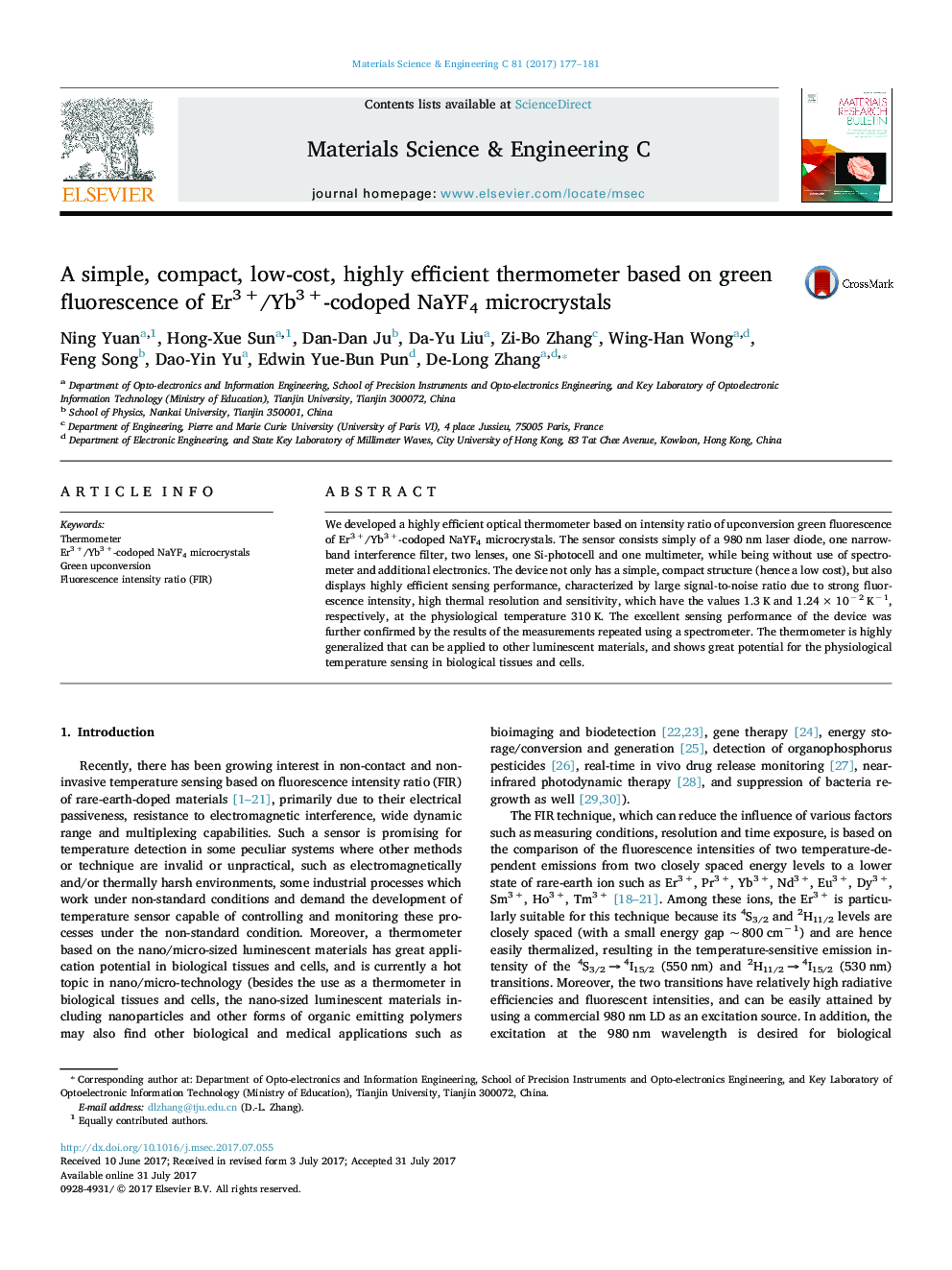| Article ID | Journal | Published Year | Pages | File Type |
|---|---|---|---|---|
| 5434227 | Materials Science and Engineering: C | 2017 | 5 Pages |
â¢A simple, compact, low-cost, highly efficient thermometer is developed.â¢It is based on ratiometric fluorescence technique and Er/Yb:NaYF4 microcrystals.â¢It consists of an LD, two lenses, one filter, one Si-photocell and one multimeter.â¢The sensor shows good signal-to-noise ratio, and high resolution and sensitivity.â¢The thermometer shows great potential for use in biological tissues and cells.
We developed a highly efficient optical thermometer based on intensity ratio of upconversion green fluorescence of Er3 +/Yb3 +-codoped NaYF4 microcrystals. The sensor consists simply of a 980 nm laser diode, one narrow-band interference filter, two lenses, one Si-photocell and one multimeter, while being without use of spectrometer and additional electronics. The device not only has a simple, compact structure (hence a low cost), but also displays highly efficient sensing performance, characterized by large signal-to-noise ratio due to strong fluorescence intensity, high thermal resolution and sensitivity, which have the values 1.3 K and 1.24 Ã 10â 2 Kâ 1, respectively, at the physiological temperature 310 K. The excellent sensing performance of the device was further confirmed by the results of the measurements repeated using a spectrometer. The thermometer is highly generalized that can be applied to other luminescent materials, and shows great potential for the physiological temperature sensing in biological tissues and cells.
Graphical abstractWe have developed a thermometer based on the ratiometric fluorescence technique and Er3 +/Yb3 +-codoped NaYF4 microcrystals. The device not only has a simple, compact structure (hence a low cost), but also displays highly efficient sensing performance, which is characterized by strong fluorescence intensity (hence large signal-to-noise ratio), and high thermal resolution (1.3 K) and relative sensitivity (1.24 Ã 10â 2 Kâ 1) at the physiological temperature 310 K. The excellent sensing performance of the device is confirmed by the results of the measurements by a spectrometer. The thermometer is highly generalized that can be applied to other luminescent materials, and shows great potential for the physiological temperature sensing in biological tissues and cells.Download high-res image (426KB)Download full-size image
